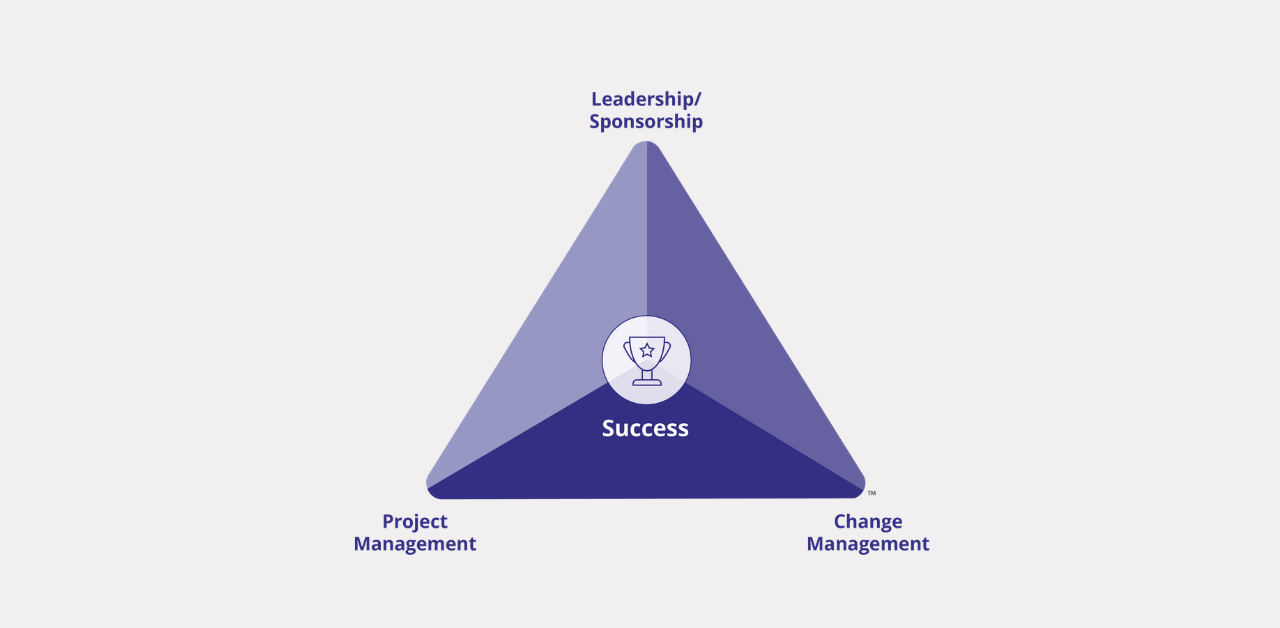Resistance to change is a natural reaction- it’s human nature. When going through change in your organisation, the goal should not be to eliminate resistance, but to mitigate it when it happens.
Prosci® often describe change as going from the current state, through the transition state, to the future state (the three phases of change). Think of the current state as the comfort zone, and the future state as uncertainty. It is inevitable that this will bring about pockets of resistance in your organisation.
Resistance is not just a small hurdle to overcome- It can come with severe costs like project delays, loss of valued employees and inefficiencies. So, what are the steps we can take to alleviate this?
Resistance Prevention
Prosci® identifies 2 avenues that you can apply no matter where you are in your change process. The first of these being resistance prevention. The best way to prevent resistance from derailing a change is to apply effective change management. In a nutshell, applying effective change management means:
- Engaging sponsors Tailoring communications to specific audiences
- Enabling managers to be leaders of change
- Every impacted group receiving adequate and appropriate training. A thorough integration of the project and change team
By applying change management at the very beginning, conducting your change management plans and activities efficiently and seeking to plan for, address and eliminate resistance, your project/change will commence from a stronger foundation.
A key tactic is the anticipation of where pockets of resistance are going to surface, and building that knowledge into your overall change management plan. As Prosci brilliantly put it, “there is no reason to wait for resistance. Anticipate and plan accordingly”.
Do you know of any areas within the organisation that have experienced change being handled badly in the past? Do you anticipate that those experiences will now make them sceptical of future changes? As a scenario, maybe you’re going through a relocation change.
During the planning phase of the project you may find that a large proportion of your workforce now have to travel further to work. It’s inevitable that this will raise some form of resistance.
Once anticipated areas of resistance are established, you’ll be able to structure your change management plans to be able to remove those barriers.
Resistance Response
You can apply change management well, you can attempt to prevent resistance, but you can still bet that there will be areas of resistance that will need addressing. This requires developing an effective response when resistance becomes persistent or enduring. If this happens, Prosci have identified 3 key steps.
- Identify the root cause of the resistance (ADKAR® assessments can be used to help determine this).
- Once the root cause is identified, a range of activities come into play in order to listen to concerns and remove any blockers.
- Enable and empower resistance manager
Note that managers and supervisors are best placed to act as resistance managers as they work with impacted staff on a daily basis, and have real insight into how they’re feeling about the change. However, managers often struggle with this role. We offer a workshop for managers to help them understand what’s needed of them and how best they can lead their team through change.
Conclusion
Resistance is natural. There are so many personal and organisational factors that go into creating that resistance, so it’s important that you keep this in mind when creating your change management plans
Want to learn more about managing resistance?
Become Prosci® change management certified. Gain the tools and techniques to help mitigate and prevent resistance to your changes, by attending one of our upcoming Virtual Prosci Change Management Certification programmes.
We can also provide bespoke Prosci® change management training for your organisation, and offer you bespoke support to help your organisation through any type of change. Get in touch to find out more!


